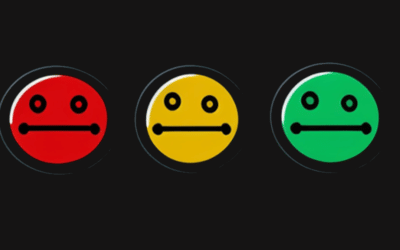
Your Title Goes Here
Your content goes here. Edit or remove this text inline or in the module Content settings. You can also style every aspect of this content in the module Design settings and even apply custom CSS to this text in the module Advanced settings.
Data: The ROI of Data Literacy
05
NOVEMBER, 2021
by Carlos Schults
We live in the age of data. Here in the 21st century, humankind generates immense volumes of data. But it isn’t only our capacity for creating data that has grown over time. Our ability to process and analyze the data we produce has increased as well. Nowadays, for the first time in history, we can make decisions based on the entirety of our data, not only on estimates.
However, to convert the potential of data into actual gains, we need to understand the data. That’s where the concept of data literacy comes in handy.
In this post, we’ll explore data literacy and its return on investment. We’ll start by defining data literacy. Then, we’ll explain in broad strokes why it matters and how you and your organization can become more data literate. After that, we’ll explain how data literacy can increase your organization’s ROI. You’ll learn how data literacy relates to data compliance, collaboration, and more.
Let’s get started. The ROI of Data Literacy:
Data Literacy Fundamentals
Let’s begin with a quick what-why-how of data literacy so we’re on the same page about the concept.
What Is Meant by Data Literacy?
In a nutshell, data literacy means knowing your data. More formally, data literacy is the ability of people or organizations to create, read, and understand data.
Data literacy involves not only the technical competencies required to handle the data, but also entails extracting meaning from the data and communicating that meaning to others in a useful way.
Let’s make a comparison to regular literacy. It’s not enough to know the individual letters and the sounds they represent, or even reading entire words. To be really literate, one must read entire sentences, and, most importantly, extract meaning from them.
We can say the same about data literacy. Knowing how to write SQL queries is valuable. And so is understanding basic data concepts. But real data literacy lies in having the knowledge and skills necessary to make sense of the data.
Why Is Data Literacy Important?
Data literacy matters for individuals like you and me for the same reasons regular literacy matters. It’s a critical skill for living in the 21st century, not only for being employable but also for navigating life in a more efficient and pleasurable way. After all, my literacy is responsible for much of my professional development, but it also enables me to read the novels I enjoy.
But what about organizations?
Think about it. All organizations, even smaller ones, generate data. And, for the most part, they just keep all that data laying there, accumulating digital dust. Becoming a data literate organization is the first step in stopping data waste. With the right strategy and set of tools, organizations become able to analyze and make sense of their data. They are then able to move to a decision-making model based on data and knowledge rather than on guessing and intuition.
How Do You Become Data Literate?
Similar to the previous section, I’ll split this answer into two parts.
How do you become more data literate as an individual? The answer is progressive education. Think about regular literacy. You can’t read Shakespeare before knowing how to read, period. You must start by learning the individual letters, and then progressing to words, complete sentences, and so on.
The same applies to data literacy. Start learning about the fundamental concepts, and then slowly move your way up to more sophisticated ones. The great news is that you can find great free resources to start learning.
As for how to improve data literacy in an organization, the answer is a bit more involved. You have to create a data literacy strategy. For that, it’s essential to have the buy-in of the business, since the program will need budget. So, you’ll need to convince the powers that be of the benefits of data literacy. Use everything within your power, from Gartner reports to academic research.
After the business is on board, you can begin to implement a strategy. That will involve training teams and departments and brainstorming sessions to determine the most pressing business problems that can be solved through data literacy. Start with those most pressing issues and evaluate the approach at regular intervals, using the feedback gathered to improve the strategy.
Knowing Your Data Pays: How Data Literacy Helps Organizations
You’re now up to speed with the fundamentals of data literacy. Let’s now explore some of the ways in which data literacy can benefit your organization.
Data Literacy and Human Resources
Human Resources challenges abound in organizations. Job interviews—and the selection processes in general—are hard to get right, besides being expensive and time-consuming (which is just a different spelling for expensive).
Organizations that apply data literacy to HR in what’s known as “people analytics” are able to measure and improve employees’ productivity. They can also identify and fix inefficiencies and wastes of resources, helping drive costs down.
And what’s more, they’re able to make better hires in the first place, using analytics to identify candidates likely to be great matches for the organization. People analytics also helps organizations mitigate the weight of unconscious biases during selection processes, making for a more fair process overall.
Data Literacy and Collaboration
Data literacy also helps you foster collaboration inside your organization.
A data literate organization is able to streamline its operations and processes. With the right tooling, it can implement a single source of truth, which makes it easier to capture and share information inside teams and across teams, facilitating collaboration. It becomes easier to identify and remove impediments, and knowledge flows more easily inside the organization, preventing waste and duplicate efforts in problem-solving.
Data Literacy and Data Compliance
Organizational data literacy plays a crucial role when it comes to data compliance. Today more than ever, it’s vital for companies to do everything within their reach to safeguard users’ data.
First of all, it’s the right and ethical thing to do. Secondly, you must consider the immense reputation damage that can be caused by data leakages and other incidents. This reputation damage can—and often does—lead to dire financial damage or, in the worst-case scenarios, to the company breaking. And don’t think the worst-case scenario is rare: It’s estimated that organizations that fail to stop data breaches have only a 40% survival rate.
Last, but not least, don’t forget data privacy legislation. You’re probably familiar with GDPR, the EU regulation in effect since May 2018. There are similar regulations in other jurisdictions, such as California’s CCPA and Brazil’s LGPD.
Those regulations are, generally speaking, good news for consumers. However, they do bring new challenges to companies that must invest in their compliance strategies under penalty of heavy financial and legal consequences.
Data literacy can help organizations with their data compliance strategies. When organizations have comprehensive knowledge of their data, it becomes easier to locate risk points and remedy them.
Know Your Data and Get It to Work for You!
In this post, we’ve explored the concept of data literacy and its benefits. We’ve shown some of the ways in which data literacy helps your organization.
Even though they’re all important, I dare to say data compliance is the most pressing. There’s simply too much at stake: Your organization can’t afford to disregard this issue.
That’s why, besides continuing your data literacy education, we invite you to take a look at Enov8’s Data Compliance Suite. This is a tool that can automatically identify data security exposures. And what’s more, it can remediate those risks—for instance, using data masking or another obfuscation approach—ensuring your organization remains compliant.
Know your data. Have it work for you without forgetting safety and compliance.
Thanks for reading.
Post Author
This post was written by Carlos Schults. Carlos is a consultant and software engineer with experience in desktop, web, and mobile development. Though his primary language is C#, he has experience with a number of languages and platforms. His main interests include automated testing, version control, and code quality.
Relevant Articles
RAG Status: What It Is and Using It for Project Management
Effective Leadership requires effective tooling to drive successful outcomes. One tool they can use to monitor and measure progress is RAG status. RAG stands for Red, Amber, Green, and is a simple traffic light system used to communicate the current status of a...
Enterprise Architecture Tools: 11 to Be Aware Of in 2025
Enterprise architecture (EA) is an essential discipline for organizations aiming to align their IT strategy with business goals. As companies become more complex and technology-driven, having the right set of EA tools is crucial to streamline operations, improve...
What is a Staging Server? An Essential Guide
Release issues happen. Maybe it’s a new regression you didn’t catch in QA. Sometimes it’s a failed deploy. Or, it might even be an unexpected hardware conflict. How do you catch them in advance? One popular strategy is a staging server....
What is Deployment Planning? A Detailed Guide
Deployment planning, sometimes referred to as "implementation planning," is the process of creating a plan for the successful deployment of a new software or system. It involves identifying the resources, tasks, and timeline needed to ensure that the deployment is...
The Definitive Guide to Test Data Generation
Test data generation is a critical part of the software testing lifecycle, ensuring that applications are tested against realistic scenarios before going live. If you’re not testing against production-like data, you’re arguably not truly testing your application. In...
What is a Test Data Manager? A Detailed Introduction
Testing is a critical aspect of software development, and it requires the use of appropriate test data to ensure that the software performs optimally. Test data management (TDM) is the process of creating, storing, and managing test data to ensure its...










